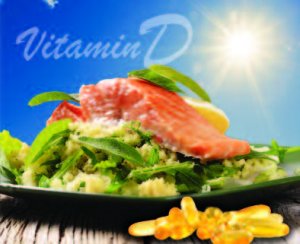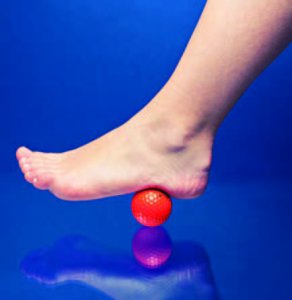by Specialdocs Consultants, LLC | Nov 20, 2017 | Medical Conditions, Patient News

The aching, swollen, stiff joints associated with osteoarthritis (OA) have long been considered an inexorable result of aging. According to conventional wisdom, cartilage, the smooth connective tissue on the end of bones that cushion the joints, simply breaks down over a lifetime of walking, exercising and moving, allowing the bones to rub together. When medications and physical therapy no longer provide relief, a costly and time-intensive mechanical joint replacement may be the only solution. However, advances in research and a focus on prevention are providing
a new outlook on an ageold problem…we bring you the latest insights, below.
Prevention
The connection between overweight and OA is even stronger than previously thought. Recent studies show that up to 65 percent of cases of OA of the knee could be avoided if weight was reduced. Consider that your knees bear a force equivalent to three to six times your body weight with each step, so a lighter weight relieves the burden considerably. For women, extra weight is even more of a risk factor than men. In addition, fat tissue produces proteins called cytokines that cause inflammation, and in the joints, this can alter the function of cartilage cells. Gaining weight results in your body releasing more of these harmful proteins. However, losing even a few pounds can reduce joint stress and inflammation and decrease by half the risk of OA.
Avoid practicing a sport in an intensive and prolonged way. An injured joint is nearly seven times more likely to develop arthritis than one that was never injured. The condition is now seen more frequently among 30 to 50-year-olds than previously because young athletes or middle-aged ‘weekend warriors’ who tear their anterior cruciate ligament (ACL) or menisci of the knee have a much higher risk of osteoarthritis 10 to 20 years after their injury. Take steps to manage or prevent diabetes, which may be a significant risk factor for OA. Some studies suggest high glucose levels trigger the formation of molecules that make cartilage stiffer and less resistant to stress, and cause inflammation that leads to cartilage loss.
Management
Low impact exercise is key to living well with osteoarthritis. While resting aching joints can bring temporary relief, lack of movement will ultimately lead to more discomfort.
Exercise strengthens the muscles around the joint, acting like a shock absorber, helping to reduce pain. In addition, exercise helps with weight control and is a natural mood elevator. Experts recommend low-impact activities like swimming, walking, biking, and moderate weight lifting. The Arthritis Foundation developed a form of tai chi specifically for people with arthritis,
featuring agile steps and a high stance, that helps increase flexibility and improve muscle strength inthe lower body.
Some new approaches to pain management show promise, but beware of unsubstantiated claims. Platelet-rich plasma (PRP) injections, which involve withdrawing blood, spinning
it to separate the platelets and then injecting the concentrated platelets into a joint, are being studied for long-term effectiveness. Experts advise against costly supplements such as glucosamine, chondroitin and shark cartilage, all of which have proven of little benefit for people with OA. Some elements of Chinese medicine, including herbs and acupuncture, may help control OA symptoms in some people, but these therapies have not yet been confirmed in large, well-designed clinical studies. Also unproven are low-power laser light, copper bracelets or magnets, chiropractic manipulation and acupressure. The most effective over the counter medication are NSAIDs (non-steroidal anti-inflammatory drugs such as Advil). While Tylenol helps reduce pain and is the safest medicine for older people or those with kidney disease, it does not lower inflammation.
Finally, if you do need an orthopedic implant in the future, take comfort in the fact that development of the next generation of devices is well underway. They will likely be biologic, composed of protein and cells instead of metal and plastic,…functioning as well as a normal joint and created to last a lifetime.
The post Joint Assets appeared first on Specialdocs Consultants.
by Specialdocs Consultants, LLC | Nov 20, 2017 | Healthy Aging, Patient News, Wellness

HealthWise presents an ongoing look at research that provides valuable insights to help today’s seniors – and the generations set to follow – create a vibrant next chapter. We have looked at strategies to keep the aging brain healthy and to protect the aging senses. In this issue, we get under your skin to learn how to keep it supple and resilient over the years. Wrinkles. Dry skin. Crow’s feet. Undereye circles. Sagging. Is there a way to stave off these very natural signs of aging? The answer is yes…and no. The thickening of the stratum corneum (the outer layer of the epidermis) which causes drier and flakier skin, is inevitable, as is the thinning of the dermis (underneath the epidermis), resulting in loss of elasticity. Genetics plays a pivotal role in determining when this starts to occur. However, there are a number of preventive steps you can take – some well-known and a few unexpected – which may help mature skin keep its youthful glow at 50, 60 and beyond.
Experts advise:
- Cut your sun exposure in half, at a minimum. UV exposure damages elastin and causes a loss of collagen, which results in sagging, fine lines and wrinkles. Think of sunscreen as the only truly magic elixir to improve skin appearance and health, and most importantly, prevent skin cancer…and choose one with SPF 30 or above and broad-spectrum UVA/UVB protection and use daily. In addition, wear a hat and UV-protective clothing outside, and try and avoid being in the sun when UV rays are strongest, between 11 am and 1 pm.
- Exercise. Another benefit to engaging in at least three hours of physical activity weekly is the positive impact on keeping skin younger, with the potential to reverse skin aging even for those
who start exercising late in life. New research showed that men and women over age 65 who exercised frequently had skin composition similar to 20 to 40-year-olds, with markedly thinner,
healthier stratum corneums and thicker dermis layers. Participants’ skin “looked like that of a much younger person, and all they had done differently was exercise.” Researchers surmised
that myokines, substances created by working muscles, may be responsible for the results, jump starting changes in cells far from the muscles themselves. They also noted that it was
unlikely that any pill or salve would replicate the skin benefits of a workout.
- Take short, lukewarm showers. Long, hot showers strip your skin of its natural oils.
- Protect in winter with a humidifier to add moisture to the home, and gloves to protect your hands from drying out.
- Focus on the right foods and beverages. Include omega-3 and omega-6 fatty acids in your diet, preferably from natural sources such as olive oil and fish, to help protect your skin’s
moisture barrier. Cut back on sugars which promote inflammation and can potentially damage normal production of dermal cells. Avoid high glycemic foods such as white bread and pretzels, which may also be responsible for prematurely aging skin. Drink plenty of water, but moderate alcohol intake – red wine can dilate blood vessels and contribute to rosacea, a skin irritation.
- Establish a smart night routine. Remove all makeup and wash your face before bed to eliminate the pollutants that break down your skin’s collagen all day. Then apply a retinoid followed
by a moisturizer.
- Get a good night’s sleep. During the deepest stage of sleep, your body releases growth hormones for cell repair, helping your skin rejuvenate on a daily basis.
- Minimize dark undereye circles with an extra nighttime pillow. As the delicate skin and muscle around the eyes weaken with time, the fat under the lower-lid skin can pool beneath your eye. Sleeping on two pillows can help prevent fluid accumulation.
If you want to explore other remedies, consider peels that exfoliate, and fractional resurfacing, a laser process that increases collagen production.
The post Aging Well, Aging Healthy…a continuing series appeared first on Specialdocs Consultants.
by Specialdocs Consultants, LLC | Nov 20, 2017 | Nutrition, Patient News

While they may not have the crisp appeal of sugar snap peas or the sleek appearance of a summer tomato, winter’s bounty of root vegetables and greens brings some of the year’s most nutrient-rich dishes to the table. Serve up as chips or gratins, roasted or braised, mashed or raw, in soups or salads…see our recommendations for a taste of the season below.
If you like kale, try collard greens, a super-green that can be thinly sliced and used in salads, or braised with mushrooms for satisfying flavor without meat. Anti-inflammatory, antioxidant (cancer preventive) and cholesterol-lowing nutrients are on the long list of benefits.
Looking for low-carb substitutes for mashed or fried potatoes? Pureed cauliflower makes a delightful stand-in for mashed potatoes, especially when blended with Greek yogurt. Less common are Romanesco, an excellent source of vitamins C and K, fiber and carotenoids; Kohlrabi, with edible roots, leaves and stems packed with potassium and Vitamin C; and Celeriac, also known as root-celery, containing antioxidants, Vitamin K and phosphorus. For a healthy alternative to French fries, consider Jerusalem artichokes, or sunchokes, with a mellow taste and flaky texture, and plenty of energy-boosting iron and cholesterol-lowering soluble fiber. Slice matchstick-thin, mix in a sprinkle of vegetable oil, rosemary, cayenne, salt and pepper and bake for 15 minutes. Or enjoy a baked sweet potato, skin and all, for a winter treat that’s high in Vitamin A and fiber, with a minimum of calories.
Beets, high in folic acids, offer crunch, color and taste. Sautee with garlic and some olive oil or use in soups for a nutritional boost.
Change up onions with leeks, which have a milder, sweeter flavor, and compounds such as allicin that fight free radicals in your body and flavonols that may help fight cancer and lower the risk of heart disease.
Carrots are always a sturdy choice, rich in beta carotene, a compound that may reduce heart disease and certain types of cancer (although supplements are not recommended, especially for smokers), and Vitamin A, which bolsters vision and bone growth. Parsnips offer a change of pace, with a sweet flavor, double the fiber of carrots, potassium and folate for cardiovascular benefits, and almost 40 percent of the daily requirement of Vitamin K, a nutrient associated with bone health.
Winter squash, in a variety of shapes, colors and flavors, are rich in Vitamins C and A, and can be boiled, baked, roasted, simmered, steamed, microwaved or sautéed. For a low-calorie alternative to pasta, try spaghetti squash which yields long yellow strands when cooked. Sweet potato fans will enjoy butternut squash, with a similar sweet nuttiness and an even silkier texture.
Broccoli contains calcium, folate, iron, protein, Vitamins A and C and fiber, and is versatile enough to steam, roast, stir fry, puree for soups or eat raw.
Give winter salads a spin with a bowl of curly endive, radicchio, beets, fennel, kohlrabi and turnip greens. Roast or boil until tender and dress while still warm to allow the flavors to be completely absorbed.
There are many more choices in the produce aisle…go browse your local grocery store and try something new this winter!
The post Find Your Roots with Winter’s Best Veggies appeared first on Specialdocs Consultants.
by Specialdocs Consultants, LLC | Nov 20, 2017 | Healthy Aging, Medical Conditions, Patient News

In the not so distant past, age-related macular degeneration (AMD), characterized by a loss of central vision, was deemed just another unfortunate consequence of growing older. The gradual breakdown of light-sensing retinal tissue that results in a blind spot directly ahead has caused each generation to struggle with driving a car, reading a printed page or recognizing a friend’s face. As the population ages, the sheer number of people affected grows rapidly. Another case of AMD is diagnosed every three minutes in the U.S. More than 2.1 million Americans with advanced AMD now will grow to 3.7 million by the year 2030, according to the National Eye Institute, who warns the condition will soon take on aspects of an epidemic. A surge of clinical trials and investigative research aims to prevent that from happening, with sights set firmly on restorative, curative solutions.
Scientists exploring the possible causes have made much progress isolating a group of genes that increases the likelihood of an individual developing AMD. Other studies point to inflammation as the trigger. The macula needs a constant, rich blood supply to work correctly, and any interference such as narrowing of the blood vessels, fatty plaque deposits, or a shortage of antioxidants, can cause the macula to malfunction and become diseased.
Treatments have likewise advanced. Last fall, a decades-old drug used to treat HIV/AIDS was reported in Science as unexpectedly exhibiting the capability to halt retinal degeneration. Nucleoside reverse transcriptase inhibitors, known as NRTIs, are already FDA-approved and can be rapidly and inexpensively translated into therapies for both dry and wet AMD (see sidebar), say the study’s authors. At the same time, a nanosecond laser treatment was successfully used to reduce drusen (small fatty deposits beneath the retina) and the thickening of Bruch’s membrane, both hallmark features of early AMD. Importantly, the structure of the retina remained intact, suggesting “this treatment has the potential to reduce AMD progression,” according to Medical News Today. Stem cell transplantation shows enormous promise, as reported in Lancet, with sight restored long-term to a group of patients with severe vision loss. Additionally, injectible drugs and pills that target inflammation associated with AMD are in nationwide trials.
Technological innovations to help AMD patients include the 2013 introduction of a miniature telescope implanted behind the iris to magnify images. Google is moving into the space with a patent for a contact lens containing a built-in camera that will enable audible warnings via a remote device, detect and describe faces, and act as a text reader.
Today’s AMD patients have no shortage of low-vison aids to help them adapt and live well. Google is developing a patent for a contact lens containing a built-in camera that will enable audible warnings via a remote device, detect and describe faces, and act as a text reader. Additional solutions range from ‘smart’ thermostats, watches and remote controls to talking devices.
Finally, understanding who is at risk for developing AMD can be key to prevention. These include: white, female, smoker, family member with AMD, high blood pressure, lighter eye color, obesity, and possibly, over-exposure to sunlight. To minimize risk, follow a healthy diet with plenty of leafy green vegetables and fish high in omega-3 fatty acids, exercise to keep weight and blood pressure under control, eliminate tobacco use, and wear sunglasses to protect from UV rays and high-energy visible (HEV) radiation.
When Dry Becomes Wet
Diagnosis of AMD is first confirmed with a visual acuity exam and testing with an Amsler grid. Those with AMD see the grid’s straight lines as wavy or blurred with dark areas at the center. Additional tests help determine the type of AMD — the dry form affects about 85 percent of AMD patients, and in about 10 to 15 percent of cases, progresses to wet. The difference is significant. The wet form usually leads to more serious vision loss, caused by new blood vessels that leak fluid and blood beneath the retina, resulting in permanent damage. While no treatment currently exists for dry AMD, in the last decade, a number of effective therapies have been implemented for wet AMD. These include monthly, intraocular injections (anti-VEGF) to inhibit a protein that stimulates formulation of new blood vessels, photodynamic or ‘cold’ laser treatment, thermal (heat) laser photocoagulation…and on the horizon are topical eyedrops that may someday replace injections. Nutritional supplements containing antioxidant vitamins, lutein and zeaxanthin are also effective in reducing the chances of dry AMD worsening to wet.
The post In Our Sights: Sharper Focus on Macular Degeneration Offers New Hope appeared first on Specialdocs Consultants.
by Specialdocs Consultants, LLC | Nov 20, 2017 | Nutrition, Patient News

In the multi-lettered world of vitamins and minerals, why did Vitamin D move to the top of the list…and should it be there? Following is a look at the paradox of the “sunshine vitamin,” critical to the body’s healthy function in numerous ways, but may not be important enough to warrant regular screenings, according to the latest national recommendations.
The undisputed connection between Vitamin D, the sun and bone strength was established early in the 20th century, when doctors discovered that sunlight triggers the production of Vitamin D and helped cure rickets in children. Essential for strong bones, Vitamin D helps the body absorb calcium. Unlike other vitamins, however, it is naturally present in very few foods (fish like salmon and mackerel, eggs, mushrooms and commercially fortified milk). Dr. John Cannell, who founded the Vitamin D Council to better advocate for its use, cautions: “It’s nearly impossible to get what you need from food.”
For many Americans, lack of sunshine except during the short summer season poses a concern because exposure to the sun is necessary to turn a chemical in the skin into Vitamin D. Even in sunny climates, people who spend most of their day indoors or faithfully apply sunscreen are at risk of Vitamin D deficiency, according to research that emerged in the 2000s. Low levels of the vitamin were increasingly linked to a litany of the world’s ills—cancer, heart disease, diabetes, arthritis, even depression. By 2012, researchers had discovered that Vitamin D receptors were found not only in the intestines, but in many other organs. “We know that basically every cell in your body has a Vitamin D receptor; it has been found in the brain, skeletal muscle, colon, breast, prostate, and the list goes on,” Dr. Michael F. Holick, a prominent expert at Boston University Medical Center, told Endocrine News.
Additional research bolstered the importance of Vitamin D, such as a recent British Medical Journal study that tracked more than 95,000 participants for nearly 40 years to find that genes associated with permanent low levels of Vitamin D raised the risk of early death by up to 40 percent. However, the study’s author cautioned that the relationship was not proven to be causal and therefore, no recommendations for supplements can be made.
The chicken-egg conundrum is explained by Dr. JoAnn Manson, Professor of Medicine at Harvard Medical School: “We’re at a crossroads because we really don’t know if there’s a cause and effect relationship between Vitamin D status and outcomes such as heart disease and cancer.” Obesity and lack of exercise contribute to higher rates of cancer and heart disease, so those factors could explain the illnesses, rather than a low Vitamin D level, she said.
In fact, despite the mountains of research, the U.S. Preventive Services Task Force (USPSTF) stated late in 2014 there is insufficient evidence to justify taking mega-doses of Vitamin D to prevent chronic diseases, and did not recommend regular testing of blood levels. All eyes are now on the national, 26,000-participant VITAL trial, which will conclusively report in 2017 the effects of Vitamin D or fish oil on reducing the risk of cancer, heart disease and stroke.
Different medical experts suggest different guidelines for Vitamin D supplementation. The Institute of Medicine’s guidelines state 600 IU (International Units) for ages 14 to 70, and 800 IU for age 71 and above; the Endocrine Society recommends 1,500-2,000 IU per day, and the Vitamin D Council advises “safe, sensible sun exposure, and if that’s not possible, 5,000 IU a day.” Please call my office for recommendations on the right amount of Vitamin D for you.
The post How Much Vitamin D Do We Really Need? appeared first on Specialdocs Consultants.
by Specialdocs Consultants, LLC | Nov 20, 2017 | Patient News, Staying Active

Every step you take is a physiological marvel, made possible by the 26 bones, 33 joints and over 100 ligaments of the foot working together to ensure maximum movement. The intricate sequence begins as your heel hits the ground, and ends with a push off the big toe at the same time the Achilles tendon lifts the heel, requiring a force that is about 50 percent greater than your body weight. Now consider that during a typical day, people spend about four hours on their feet and take 8,000 to 10,000 steps – that means the feet support a combined force equivalent to several hundred tons every day.
While feet were designed to propel you through life with powerful ease, many factors can affect function. Age, obesity, long periods of standing, certain diseases such as diabetes, some types of exercise, faulty foot mechanics, overuse or misuse of muscles, even ill-fitting shoes, result in pain that can sideline even the most determined walker. However, today’s treatment of choice – a combination of non-invasive measures and time – will get most people back on their feet without the complications of surgery.
Plantar Fasciitis, the most common cause of foot pain. Although it is known as jogger’s heel, there are multiple causes of plantar fasciitis, responsible for one million visits to the physician each year. Exercise such as dance and aerobics can contribute to plantar fasciitis, as can being flatfooted or having a high arch, carrying extra weight, or working in an occupation that requires frequent standing or walking on hard surfaces. The plantar fascia is a band of tissue from the heel to the ball of your foot that supports your arch like a bowstring; too much tension on it creates small tears. Repetitive stretching and tearing causes the fascia to become inflamed and irritated, and results in a stabbing pain felt most acutely in the morning or after any period of inactivity.
Physical therapy can help relieve the pain, which is often aggravated by tight muscles in your feet and calves. Exercises to stretch the plantar fascia and Achilles tendon and strengthen lower leg muscles are often prescribed initially. Notably, one of the most effective treatments for plantar fasciitis may also be the simplest. Patients who tried slowly raising and lowering the affected heel while standing barefoot on a stair or a box, 12 times every other day, reported a vast improvement in pain and disability in three months, compared with those who adhered to a standard regimen of pulling toes toward the shins several times daily. When performing that exercise, it is best to roll a hand towel and place it under the toes to increase the amount of flexion.
In addition to therapy, other conservative measures are recommended initially, including:
- avoid flat shoes and barefoot walking
- cut back on activities that may aggravate the
- condition (running, dancing, jumping)
- over-the-counter silicone heel shoe inserts
- short-term trial of anti-inflammatory drugs
Plantar fasciitis can persist, however, and additional treatment may include:
- single glucocorticoid (cortisone) injection
- molded shoe inserts (orthotics) or arch supporting shoes
- night splints
- cushioned walking boot
Fancy Footwork: Expert Advice to Keep You on Your Toes
Preventive stretching. Add conditioning exercises to your daily routine, such as rolling your foot over a golf ball for a few minutes to work the plantar fascia ligament, or tracing the letters of the alphabet with your feet. Wrap a TheraBand (a resistance tool) around the sole of your foot while sitting on the floor with your legs straight out in front, and flex and point.
Size check. The size of your foot can change over time, especially in women whose feet become longer and wider after pregnancy. Ask for a professional measurement the next time you shoe shop.
Find the right fit. Too-tight shoes weaken the muscles in the ball of the foot and the ligaments that hold the toes straight, causing corns, ingrown nails and bunions. Make sure your shoe is roomy enough to provide a finger’s breadth between its tip and your big toe.
Stand tall, naturally. High heels are the most common cause of foot pain among women, leading to corns, calluses, bunions and neuromas (pinched nerve or nerve tumor). Choose shoes broad in the toes, with a low wedge and shock absorbent sole.
The good news: almost 90 percent of patients with plantar fasciitis will improve within 10 months of starting simple treatment methods, say experts.
The post Thinking on Your Feet: The Latest on Warning Signs from Below appeared first on Specialdocs Consultants.







Recent Comments